
India’s Next-Generation Towed Gun Systems: A ₹7,000 Crore Opportunity for Private Defence Manufacturers
Contents
- 1 India next-generation towed gun systems
- 1.1 India’s Next-Generation Towed Gun Systems: A ₹7,000 Crore Opportunity for Private Defence Manufacturers
- 1.1.1 The Strategic Importance of Next-Generation Artillery
- 1.1.2 Private Sector’s Role: A Competitive Battlefield
- 1.1.3 Technological Advancements in Artillery Systems
- 1.1.4 India’s Artillery Modernization: A Step-by-Step Approach
- 1.1.5 The Future of India’s Defence Manufacturing
- 1.1.6 Conclusion
- 1.1.7 Frequently Asked Questions (FAQs)
- 1.1.7.1 1.What is the estimated value of the Indian Army’s Towed Gun Systems acquisition?
- 1.1.7.2 2.How many next-generation artillery guns does the Indian Army require in the first phase?
- 1.1.7.3 3.Which companies are leading contenders for the Towed Gun Systems contract?
- 1.1.7.4 4.What is the significance of the 155mm/52 caliber guns?
- 1.1.7.5 5.Why is the Indian Army upgrading its artillery systems?
- 1.1.7.6 6.What role does the private sector play in this acquisition?
- 1.1.7.7 7.What is the ‘Make in India’ mandate for this tender?
- 1.1.7.8 8.How many total next-generation artillery guns does the Indian Army need?
- 1.1.7.9 9.What advancements are expected in the new Towed Gun Systems?
- 1.1.7.10 10.What is the Sharang project?
- 1.2 India next-generation towed gun systems
- 1.3 Union Cabinet Greenlights Metro and Airport Projects Worth Over ₹33,000 Crore
- 1.1 India’s Next-Generation Towed Gun Systems: A ₹7,000 Crore Opportunity for Private Defence Manufacturers
India next-generation towed gun systems
India’s Next-Generation Towed Gun Systems: A ₹7,000 Crore Opportunity for Private Defence Manufacturers
India’s defence sector is witnessing a significant development with the army’s decision to acquire next-generation Towed Gun Systems. This estimated ₹7,000 crore acquisition is not just about upgrading artillery capabilities; it’s a testament to the country’s commitment to fostering indigenous defence manufacturing. With 400 advanced gun systems required in the first phase and potential future demands exceeding 1,200 units, the tender has generated keen interest among private defence manufacturers who have invested heavily in developing state-of-the-art artillery systems.
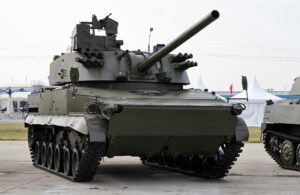

The Strategic Importance of Next-Generation Artillery
The Indian Army’s tender for 400 next-generation artillery guns marks a critical step in modernizing its artillery capabilities. These advanced 155mm/52 caliber guns are designed to be lighter and more versatile than current systems, including the existing Advanced Towed Artillery Gun System (ATAGS). The emphasis on higher automation, improved accuracy, and the ability to fire a broader range of specialized ammunition reflects the army’s focus on preparing for future combat scenarios.
This acquisition is crucial as it will replace legacy equipment that has served the army for decades but is now outdated in terms of technological advancements. The shift towards next-generation systems is driven by the need for enhanced mobility, precision, and firepower on the battlefield.
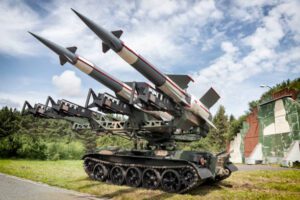

Private Sector’s Role: A Competitive Battlefield
The ₹7,000 crore tender has attracted significant interest from India’s private defence manufacturing sector. Companies like Larsen & Toubro, Bharat Forge, and Tata Advanced Systems Ltd are leading contenders for this lucrative contract. These companies have already demonstrated their capabilities by developing and supplying advanced artillery systems to the Indian Army.
- Larsen & Toubro: Known for manufacturing and supplying the K9 Vajra Self-Propelled artillery guns, L&T has established itself as a key player in India’s defence manufacturing landscape.
- Bharat Forge and Tata Advanced Systems Ltd: These companies, in collaboration with the Defence Research and Development Organisation (DRDO), have developed the ATAGS, which is currently competing for an army order. Their extensive experience and technological expertise make them strong contenders for the new Towed Gun Systems contract.
The private sector’s involvement is aligned with the Indian government’s ‘Make in India’ initiative, which aims to boost domestic manufacturing and reduce dependence on foreign defence equipment. The tender mandates that the new artillery systems must be designed in India and contain more than 50% indigenous content based on the contract value, ensuring that a significant portion of the investment stays within the country.
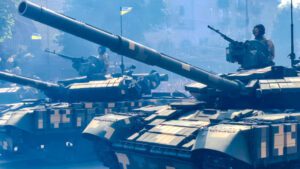

Technological Advancements in Artillery Systems
The next-generation Towed Gun Systems are expected to set new benchmarks in terms of technology and performance. These advanced 155mm/52 caliber guns will be significantly lighter and more versatile than current models, allowing for easier deployment and mobility in various terrains.
Key features of the new artillery systems include:
- Higher Automation: The integration of advanced automation technologies will reduce the need for manual operation, leading to faster deployment and more efficient operations in the field.
- Enhanced Accuracy: Improved targeting systems and firing mechanisms will increase the accuracy of these guns, making them more effective in hitting precise targets over long distances.
- Versatility in Ammunition: The ability to fire a wider range of specialized ammunition will provide the army with greater flexibility in combat situations, allowing for more tailored responses to different threats.
These advancements are crucial as the Indian Army looks to upgrade its existing 130mm field guns to the more advanced 155mm caliber under the Sharang project. The move towards higher-caliber guns is part of a broader strategy to enhance the overall firepower of the army’s artillery units.
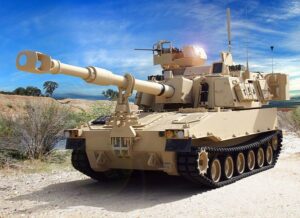

India’s Artillery Modernization: A Step-by-Step Approach
While the current tender specifies a requirement of 400 guns, the Indian Army has a total need for over 1,200 next-generation artillery guns. Due to budgetary constraints, the acquisition is being carried out in phases, with the initial batch focusing on immediate operational needs.
The phased approach allows the army to gradually replace its legacy systems with more advanced technology while managing budgetary allocations effectively. This method also provides an opportunity to assess the performance of the new systems in the field and make any necessary adjustments before full-scale production and deployment.


The Future of India’s Defence Manufacturing
The Indian Army’s drive to upgrade its artillery firepower is part of a broader modernization plan that includes several key acquisitions. A contract for the 155mm/52 Caliber ATAGS is already in the pipeline, and the upcoming acquisition of Towed Gun Systems will further bolster the country’s defence capabilities.
The involvement of private sector giants like Larsen & Toubro, Bharat Forge, and Tata Advanced Systems Ltd in this tender is a clear indication of the growing role of domestic manufacturers in India’s defence sector. India next-generation towed gun systems, As the country continues to invest in developing its indigenous defence industry, we can expect to see more such collaborations in the future, further reducing reliance on foreign suppliers.
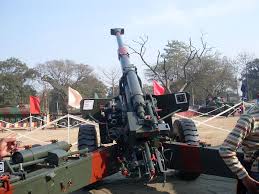

Conclusion
The ₹7,000 crore acquisition of next-generation Towed Gun Systems represents a significant milestone in India’s defence modernization efforts. By involving private defence manufacturers and focusing on indigenous content, the Indian Army is not only enhancing its artillery capabilities but also contributing to the growth of the domestic defence industry. India next-generation towed gun systems, As the tender process unfolds, it will be interesting to see how these advanced artillery systems shape the future of India’s military operations.
Frequently Asked Questions (FAQs)
1.What is the estimated value of the Indian Army’s Towed Gun Systems acquisition?
A. The estimated value is ₹7,000 crore.
2.How many next-generation artillery guns does the Indian Army require in the first phase?
A. The Indian Army requires 400 next-generation artillery guns in the first phase.
3.Which companies are leading contenders for the Towed Gun Systems contract?
A. Larsen & Toubro, Bharat Forge, and Tata Advanced Systems Ltd are the leading contenders.
4.What is the significance of the 155mm/52 caliber guns?
A. These guns are lighter, more versatile, and offer higher automation and accuracy compared to existing systems.
5.Why is the Indian Army upgrading its artillery systems?
A. The army is upgrading to enhance mobility, precision, and firepower, replacing outdated legacy equipment.
6.What role does the private sector play in this acquisition?
A. The private sector, including companies like Larsen & Toubro and Bharat Forge, is actively participating in the development and manufacturing of these advanced systems.
7.What is the ‘Make in India’ mandate for this tender?
A. The tender mandates that the artillery systems must be designed in India and contain more than 50% indigenous content.
8.How many total next-generation artillery guns does the Indian Army need?
A. The Indian Army has a total need for over 1,200 next-generation artillery guns.
9.What advancements are expected in the new Towed Gun Systems?
A. The new systems are expected to feature higher automation, improved accuracy, and the ability to fire a wider range of specialized ammunition.
10.What is the Sharang project?
A. The Sharang project is an initiative to upgrade the Indian Army’s existing 130mm field guns to 155mm caliber.





















1 comment